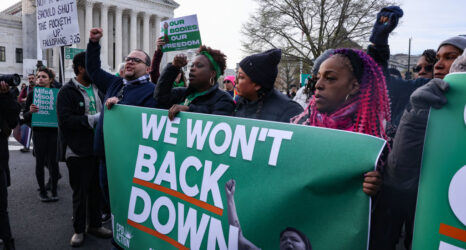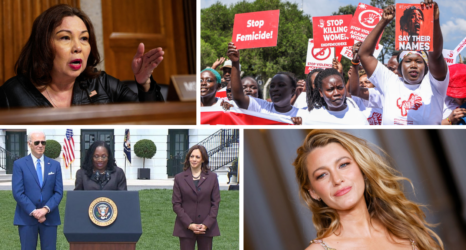Editor’s Note: On Monday, June 15, the Supreme Court ruled that Title VII of the Civil Rights Act protects LGBTQ employees from workplace discrimination.
Justice Gorsuch wrote the majority opinion, joining Chief Justice Roberts and the four liberal justices: Sotomayor, Kagan, Ginsburg and Breyer. Justices Alito, Thomas and Kavanaugh dissented.
In its decision, the Court ignored suggestions made by the Trump administration and Justice Department, which had previously urged the court to rule that Title VII does not cover sexual orientation because the common understanding of sex discrimination in 1964 did not encompass discrimination based on sexual orientation or gender identity.
The decision conceded that the authors of Title VII likely did not consider sexual orientation or gender identity when they wrote the law. Still, they wrote, an employer who fires a female employee for dating women, but not a male employee for dating women, violates the nondiscrimination clause based on sex.
This is a monumental decision that will impact the lives of millions of Americans. The Supreme Court has sent a strong message that discrimination against LGBTQ Americans is not acceptable in the workplace.
This ruling may open up new avenues to fight for LGBTQ rights in all areas of society—like Friday’s HHS ruling from the Trump administration removing nondiscrimination protections for LGBTQ people when it comes to health care and health insurance.
This piece is excerpted from the Spring 2020 issue of Ms.
Become a Ms. member to read the rest—and get even more of our feminist reporting and analysis delivered to your door, or to your mobile device, each time we release a new issue!
Gerald Bostock ran an award-winning program in Georgia that provided advocates for abused and neglected children in juvenile court. Donald Zarda turned his passion into a career as a skydiving instructor in New York. Aimee Stephens worked as a funeral director in Michigan, providing assistance to those facing profound loss.
And each of these individuals was fired from their jobs after disclosing their gay or transgender identity.
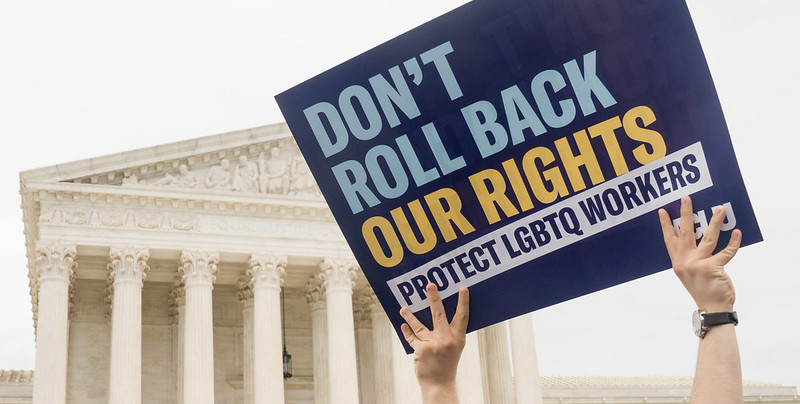
“Imagine having a job you love, that’s your dream job, and all of a sudden losing it,” Bostock told reporters.
The U.S. Supreme Court will soon decide in cases involving Bostock, Zarda and Stephens whether employers across the country can lawfully discriminate against people because of their sexual orientation or gender identity.
Specifically, in Bostock v. Clayton County, Georgia, and Altitude Express v. Zarda, the court will decide whether Title VII of the 1964 Civil Rights Act—the federal statute that prohibits employment discrimination—protects against sexual orientation bias.
In these cases, the lower courts came to conflicting decisions: The 2nd U.S. Circuit Court of Appeals held that Title VII does cover sexual orientation discrimination, yet the 11th U.S. Circuit Court of Appeals held that it doesn’t.
In R.G. & G.R. Harris Funeral Homes v. Equal Employment Opportunity Commission and Stephens, the Supreme Court will decide whether Title VII protects transgender workers like Stephens from gender identity bias. In this case, the 6th U.S. Circuit Court of Appeals held that Title VII prohibits gender identity discrimination, while other courts have held it does not.
The EEOC, the agency that enforces Title VII, has held that both sexual orientation and gender identity discrimination are covered by the statute—in fact, the EEOC itself brought Stephens’ case. In the time it took the case to reach the Supreme Court, however, the EEOC—forced by the Justice Department—switched sides in favor of the employers.
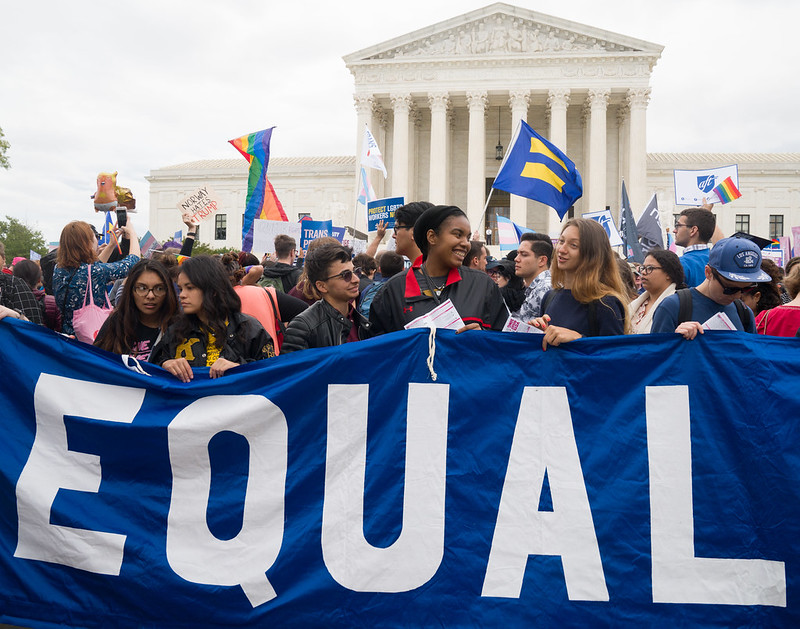
Under the Trump administration, several departments—including Justice—have reversed Obama-era rules and guidance that Title VII and other civil rights statutes prohibit gender identity discrimination.
Social acceptance of LGBT people has generally improved over the past few decades, but a variety of research demonstrates that anti-LGBT stigma and discrimination remain widespread.
So why, given the continuing pervasiveness of sexual orientation and gender identity discrimination, is there any question about whether they are prohibited under federal law?
It’s because Title VII—among other civil rights statutes—does not expressly mention that sexual orientation or gender identity is a protected characteristic. But Title VII does prohibit discrimination motivated by a person’s sex. The issue the Supreme Court will decide, therefore, is whether it agrees with the numerous lower courts that have recognized that sexual orientation and gender identity discrimination constitute sex discrimination.
The question is not whether sex is the same as sexual orientation or gender identity. Rather, the question is: Was sex a motivating factor in the employers’ decision to fire or otherwise harm someone because of their sexual orientation or gender identity?
Given that someone’s sexual orientation or gender identity—whether actual or perceived—is a function of sex, courts and the EEOC have held that an employment decision that rests on a worker’s sexual orientation or gender identity is motivated by the worker’s sex.
For example, if an employer discharges someone because she is in a relationship with a woman but would not have fired her if she were a man in a relationship with a woman, the employer has impermissibly considered the worker’s sex. More generally, someone is understood to be gay if they are attracted to someone of the same sex—so sex is necessarily part of the calculus.
Similarly, someone is understood to be transgender if their gender identity differs from the sex they were assigned at birth. In fact, the owner of the funeral home admitted to firing Stephens because, in the owner’s own words, Stephens “was no longer going to represent himself as a man.”
Discrimination on the basis of sexual orientation is additionally sex discrimination because gay people defy the gendered stereotype that men should be attracted only to women and vice versa.
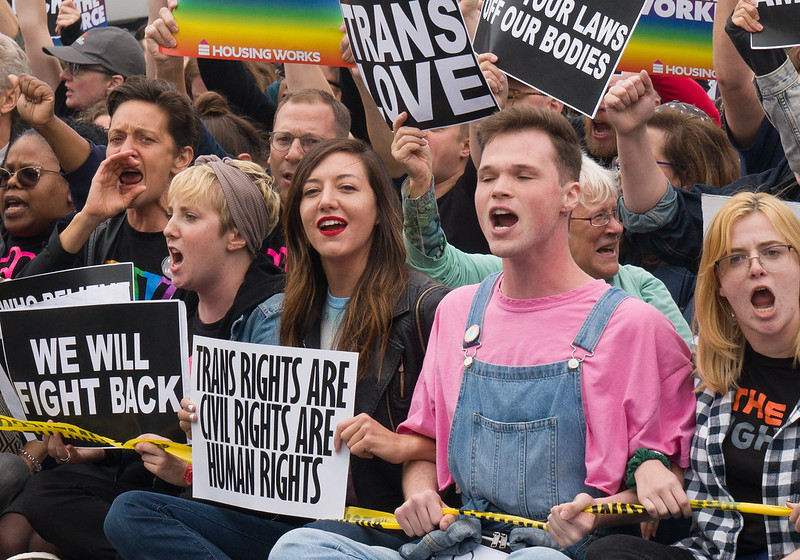
Similarly, transgender people defy stereotypes about how people should identify in terms of their gender. More than three decades ago, the Supreme Court ruled in Price Waterhouse v. Hopkins that employers may not make employment decisions based on stereotypes about how people should look or behave with respect to gender. For instance, a woman cannot be passed over for a promotion because the employer perceives her to be insufficiently feminine.
But not all courts have agreed that sexual orientation and gender identity discrimination are forms of sex discrimination prohibited by Title VII. These courts have ruled that Congress could not have intended, in 1964, to protect people in terms of their sexual orientation or their gender identity, and Congress has failed to amend Title VII to add those protections.
In Oncale v. Sundowner Off- shore Services, however, the Supreme Court ruled unanimously that what matters is not the “principal concerns of our legislators” but rather whether the discriminatory conduct in question meets the statutory requirement that it occurred “because … of sex” (which is what the text of Title VII says). In Oncale, the court ruled that Title VII prohibits male-on-male harassment even though Congress was never principally concerned with that form of discrimination.
Furthermore, courts ruling that Title VII does not encompass sexual orientation or gender identity discrimination have interpreted Price Waterhouse as prohibiting gendered stereotypes about only dress and manner but not core stereotypes about sexual and gender identity.
On Oct. 8, 2019, the Supreme Court heard arguments in Bostock’s, Zarda’s and Stephens’ cases. Bostock and Zarda were argued together because they present the same issue; Stephens’ case was argued separately. A majority of the justices seemed to recognize the strength of the textual argument that sex is a motivating factor of sexual orientation and gender identity discrimination. Justice Neil Gorsuch, for example, described the argument as “really close.”
The justices were keen to test with counsel what a ruling for Stephens would mean for sex-specific policies, such as different restrooms, dress codes or sports teams for men and women. The advocate for Stephens— and the advocate for Bostock and Zarda, who faced a similar line of questioning even though their cases are about sexual orientation— responded that a decision for their clients would not mean that sex- segregated restrooms or dress codes would be invalid. Rather, the statute would require an individualized assessment of injury.
When Justice Gorsuch inquired whether the court should consider the “social upheaval” that could result from a decision for Stephens, her counsel responded that such an assumption was unfounded given that many places have long had gender identity protections without a corresponding disruption in the social order.
The outcome of these cases is of monumental importance because more than half of the country’s 8.1 million LGBT workers live in states that do not prohibit sexual orientation and gender identity discrimination in employment. The outcome of these cases will also inform the interpretation of other federal civil rights statutes prohibiting sex discrimination in education, health care, housing and credit.
Regardless of how the court rules, Congress could provide a fix by amending our federal civil rights laws to make clear that sexual orientation and gender identity discrimination are unlawful.
In May, the House of Representatives passed such legislation—the Equality Act. And while the Equality Act is presently stalled in the Senate, a majority of the American public agrees its time has come.




